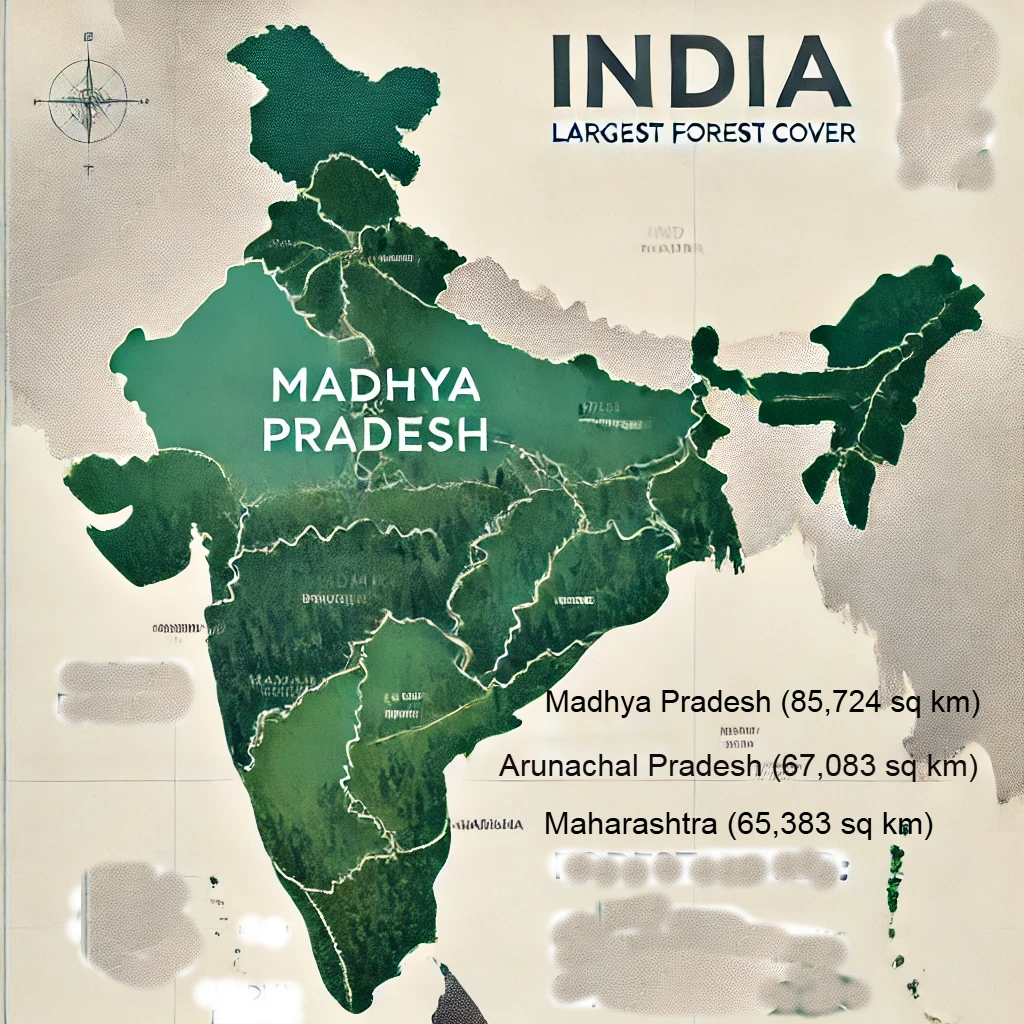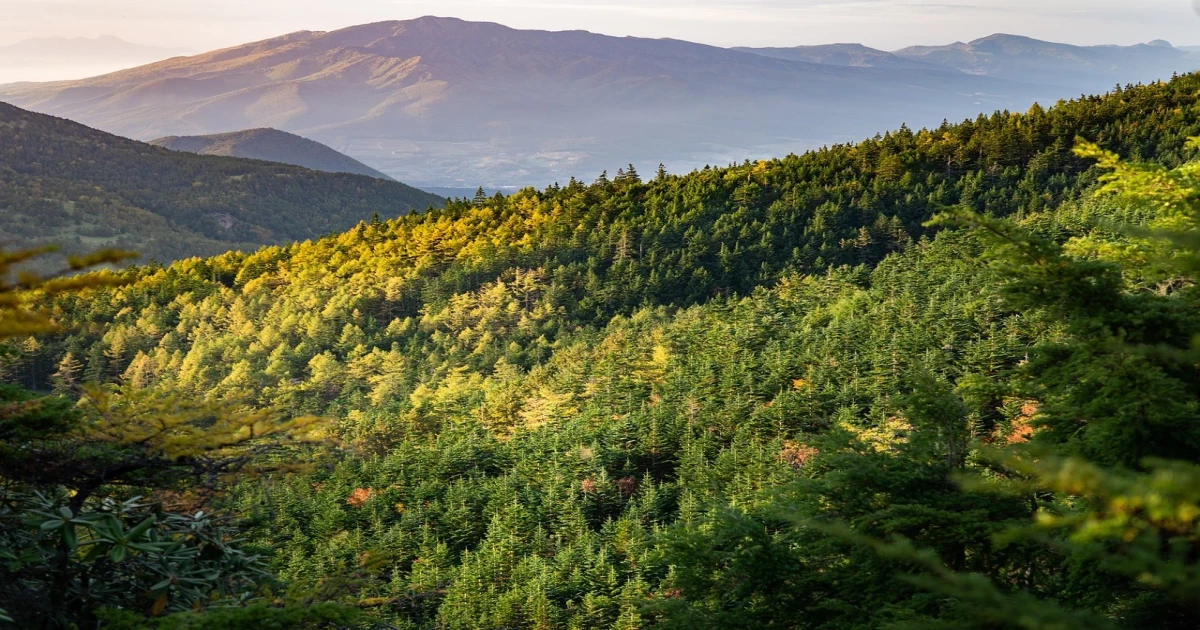Summary:
Forests are vital to India’s rich biodiversity and play a critical role in maintaining ecological balance. Covering nearly one-fourth of the country’s land, they provide essential services like carbon absorption, water regulation, and habitat for countless species.
Among these, the largest forest area in India holds special importance, offering unmatched environmental and economic benefits. Its dense greenery not only supports local livelihoods but also combats climate change by reducing carbon emissions.
India’s largest forest by area highlights the nation’s commitment to preserving its natural heritage. For example, states like Madhya Pradesh and Arunachal Pradesh boast vast forest covers that significantly affect the country’s environment.
These forests protect endangered wildlife, conserve soil, and support the water cycle. Their role in ensuring a sustainable future cannot be overstated.
However, forests face challenges like deforestation, urbanization, and illegal activities that threaten their survival. Addressing these issues is crucial to safeguarding the benefits forests bring to both people and the planet.
Protecting these green treasures requires collaborative efforts from individuals, communities, and policymakers.
Percentage of Forest in India
India’s forests cover about 21.71% of the total land area, as per the latest Forest Survey of India report. This translates to approximately 713,789 square kilometers of forested land.
Comparatively, the global average of forest cover is around 31%, highlighting India’s efforts despite its vast population and development needs. Encouragingly, forest cover in India has shown a slight increase in recent years due to afforestation initiatives and stricter conservation policies.
The trends in forest growth reveal a mixed picture. States like Andhra Pradesh and Odisha have reported significant gains in forest cover, while areas in the northeast have experienced losses due to urban expansion and agriculture.
The percentage of forest in India also varies across regions, with states like Madhya Pradesh, Arunachal Pradesh, and Chhattisgarh leading in terms of total forest area. These forests play a vital role in combating climate change and preserving biodiversity.
However, challenges like illegal logging and industrial development require urgent attention to sustain this growth.
Efforts to increase forest area growth in India include government programs like the Green India Mission and community-driven reforestation projects. By fostering awareness and participation, India can work towards achieving the global goal of sustainable forest management while enhancing its green cover further.

Forest Area in India
In India, forest area is classified legally under Reserved, Protected, and Unclassified forests. Ecologically, these forests range from lush tropical rainforests to arid scrublands, reflecting the country’s diverse climate and topography.
Tropical forests dominate the southern and northeastern regions, while deciduous forests thrive in central and northern areas. These variations highlight the richness of India’s natural ecosystems.
Madhya Pradesh holds the largest forest area in India, contributing about 11% of the total. Arunachal Pradesh, with its dense evergreen forests, and Chhattisgarh, known for sal and teak forests, follow closely.
India’s forest types include tropical rainforests, montane forests, and dry deciduous forests, each providing unique benefits. For example, tropical forests in the Western Ghats host rare species, while mangroves in Sundarbans protect against coastal erosion.
The distribution of forests in India highlights the importance of specific regions in maintaining ecological balance. States with higher forest cover support rich biodiversity and contribute significantly to water conservation and soil fertility.
However, states with limited forest areas face challenges in combating desertification and climate change. Strengthening conservation efforts across these regions is essential for ensuring a sustainable future.
Largest Forest Cover in India
Madhya Pradesh holds the title of India’s largest forest by area, covering approximately 85,724 square kilometers. This vast expanse of greenery is crucial for both the environment and the economy.
Ecologically, it serves as a massive carbon sink, absorbing harmful carbon dioxide and helping to mitigate climate change. Additionally, the forests are home to diverse wildlife, including tigers, leopards, and rare bird species, making it a hotspot for biodiversity.
The largest forest area in India also has immense economic value. Timber, medicinal plants, and non-timber forest products provide livelihoods to local communities. Tourism is another key contributor, with wildlife sanctuaries and national parks like Kanha and Bandhavgarh attracting visitors from across the globe.
Furthermore, these forests hold cultural and historical significance, with tribal communities relying on them for centuries.
Other notable forests, such as the Sundarbans mangroves and Arunachal Pradesh’s evergreen forests, also contribute significantly to India’s ecological and economic wealth.
Together, they highlight the importance of preserving the largest forest cover in India for future generations. Protecting these areas ensures not only a balanced ecosystem but also economic and cultural sustainability.
Also Read: Tropical Dry Deciduous Forest Characteristics
Environmental Benefits of India’s Forests
- Combating Climate Change: Forests act as natural carbon sinks, absorbing carbon dioxide and reducing the effects of global warming.
- Preserving Biodiversity: They provide habitats for countless plant and animal species, protecting endangered wildlife and promoting ecological balance.
- Regulating the Water Cycle: Forests contribute to rainfall and maintain groundwater levels, ensuring water availability for agriculture and daily use.
- Preventing Soil Erosion: Tree roots hold soil together, reducing the risk of landslides and desertification.
- Purifying Air: Forests filter pollutants, improving air quality and benefiting human health.
The environmental benefits of Indian forests highlight their critical role in sustaining life. By preserving them, we secure resources and protect the planet for future generations.
Challenges Facing Forest Areas in India
Deforestation: Large-scale logging and agricultural expansion lead to the loss of valuable forest cover.
Urbanization and Industrialization: Cities and industries encroach upon forests, shrinking habitats for wildlife and depleting resources.
Climate Change: Rising temperatures and changing rainfall patterns affect forest ecosystems, disrupting biodiversity and growth.
Weak Policy Enforcement: Despite laws, illegal activities like poaching and logging continue to threaten India’s largest forests.
Addressing these challenges for forest areas in India requires strong policies, sustainable practices, and active community involvement. Only then can we protect the rich natural heritage of the country.
Global Perspectives on Largest Forests
India’s largest forest area, located primarily in Madhya Pradesh, plays a vital role in the country’s ecological balance. However, when compared to globally significant forests like the Amazon Rainforest and the Congo Basin, it highlights the diversity and importance of forests worldwide.
For example, the Amazon is known as the lungs of the Earth, covering over 5.5 million square kilometers and producing 20% of the world’s oxygen. Similarly, the Congo Basin, the second-largest rainforest, spans six countries and supports unique biodiversity.
Although India’s forests are smaller in size, they are significant contributors to global forest conservation. India actively participates in international efforts like the Bonn Challenge, aiming to restore millions of hectares of degraded land.
Furthermore, India’s afforestation programs, such as the Green India Mission, demonstrate its commitment to expanding forest cover.
These efforts not only help mitigate climate change but also inspire other nations to prioritize conservation. By protecting its largest forest areas, India contributes to a healthier and more sustainable planet.
Conclusion
India’s largest forest by area is more than a natural wonder; it is a lifeline for the environment and economy. These forests preserve biodiversity, combat climate change, and provide livelihoods for millions.
Protecting the forest area in India ensures clean air, water, and a stable climate for future generations.
Everyone can play a part in conservation by supporting sustainable practices and spreading awareness. Together, we can protect India’s forests and ensure a greener future.
The significance of India’s largest forest by area reminds us of the urgent need to safeguard these treasures for a thriving planet.






